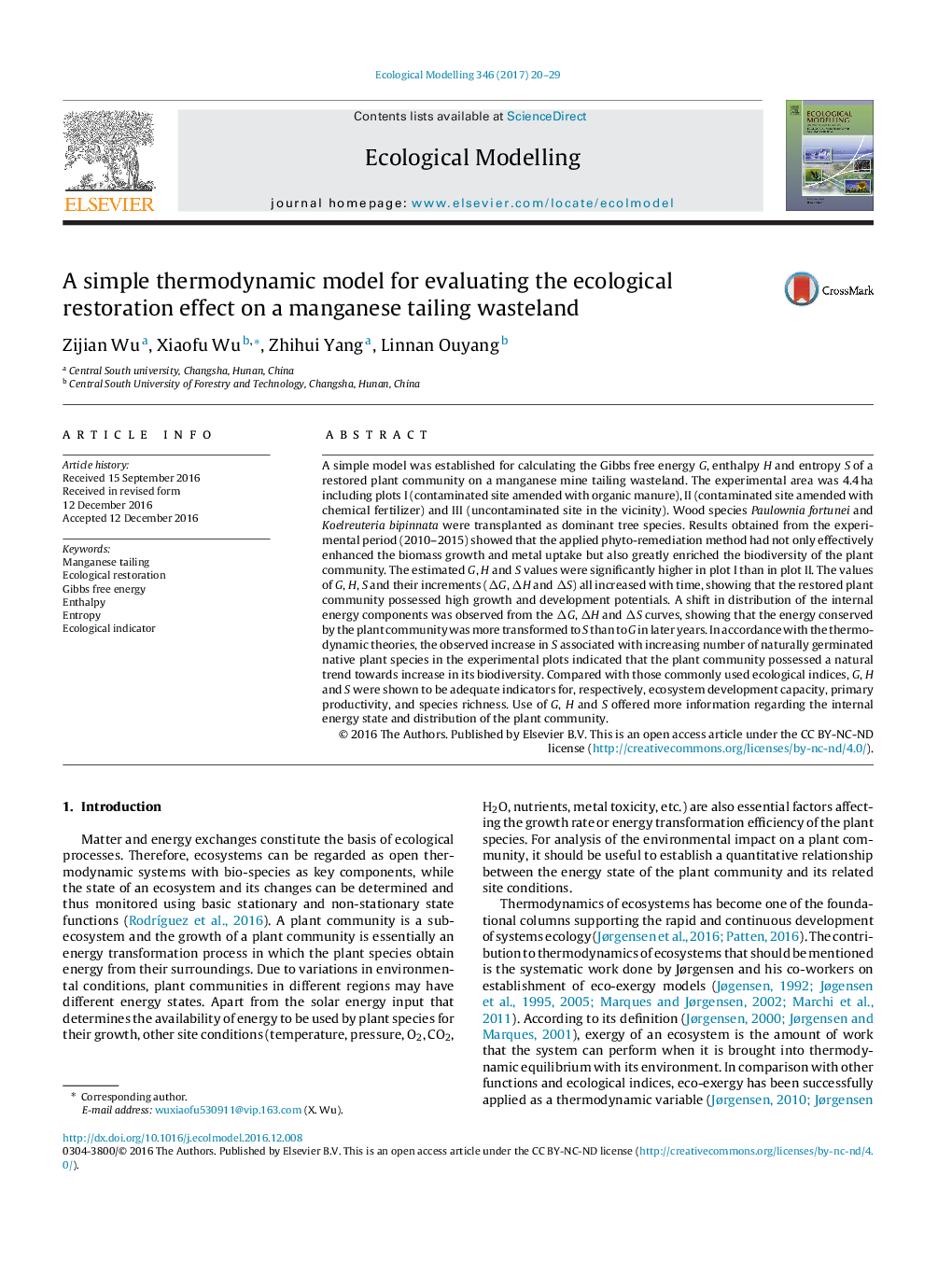| Article ID | Journal | Published Year | Pages | File Type |
|---|---|---|---|---|
| 5742342 | Ecological Modelling | 2017 | 10 Pages |
â¢Internal energy state of an ecosystem involves three essential and interrelated components, enthalpy, entropy and Gibbs free energy.â¢Enthalpy is a function of ecosystem productivity.â¢Entropy is a factor related to species richness and evenness.â¢Gibbs free energy is an indicator of ecosystem development capacity.â¢The restored plant community on a manganese contaminated wasteland possessed a natural trend towards increase in its biodiversity.
A simple model was established for calculating the Gibbs free energy G, enthalpy H and entropy S of a restored plant community on a manganese mine tailing wasteland. The experimental area was 4.4Â ha including plots I (contaminated site amended with organic manure), II (contaminated site amended with chemical fertilizer) and III (uncontaminated site in the vicinity). Wood species Paulownia fortunei and Koelreuteria bipinnata were transplanted as dominant tree species. Results obtained from the experimental period (2010-2015) showed that the applied phyto-remediation method had not only effectively enhanced the biomass growth and metal uptake but also greatly enriched the biodiversity of the plant community. The estimated G, H and S values were significantly higher in plot I than in plot II. The values of G, H, S and their increments (ÎG, ÎH and ÎS) all increased with time, showing that the restored plant community possessed high growth and development potentials. A shift in distribution of the internal energy components was observed from the ÎG, ÎH and ÎS curves, showing that the energy conserved by the plant community was more transformed to S than to G in later years. In accordance with the thermodynamic theories, the observed increase in S associated with increasing number of naturally germinated native plant species in the experimental plots indicated that the plant community possessed a natural trend towards increase in its biodiversity. Compared with those commonly used ecological indices, G, H and S were shown to be adequate indicators for, respectively, ecosystem development capacity, primary productivity, and species richness. Use of G, H and S offered more information regarding the internal energy state and distribution of the plant community.
Graphical abstractObserved changes in enthaly H, entropy S and Gibbs free energy G of a restored plant community.Download high-res image (76KB)Download full-size image
